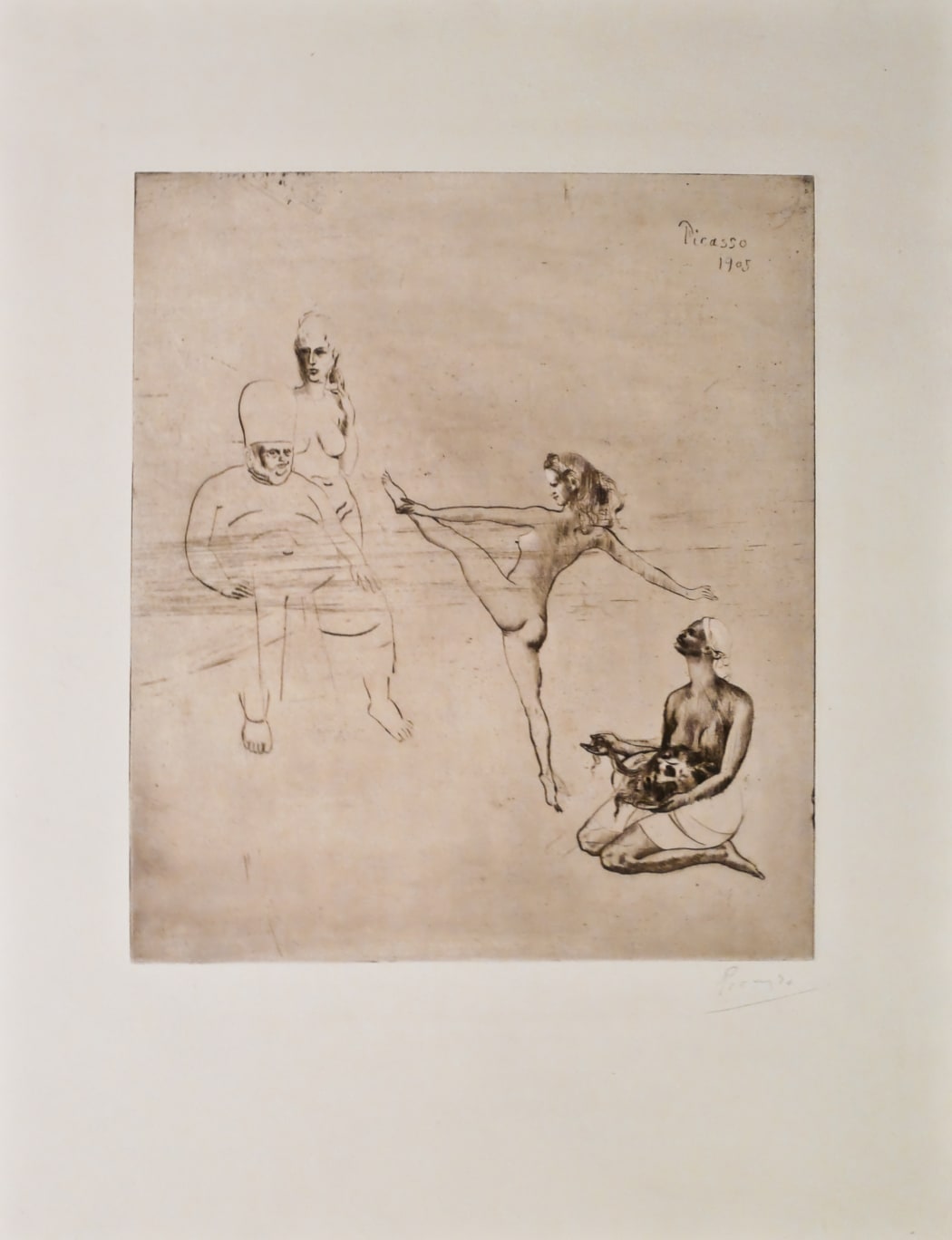
The new year: beginnings, freshening up, reflecting and resetting. What a good deal of history 2020 brought us – many not-so-enjoyable dilemmas, but just as many (hopefully more entertaining, or at least pleasantly distracting) stories of Edvard Munch and Pablo Picasso’s passionate lives in art. Already 2021 is bringing us fresh reasons to find solace in the rich, underground worlds of our favorite works, and so with all that context, we journey back with Picasso, to an era befitting this time of year: his start in printmaking, the creation of his first real group of plates. Today we’ll look at two of the fourteen prints called the “Saltimbanques,” though, as B14 and B4 demonstrate, this grouping is named more for a period of Picasso’s social experience in Paris, than strictly for its namesake.
“Saltimbanques” referred to a group of people with their own established reputation long before it did the famous subject of Picasso’s attention, if Sir Thomas Browne’s chapter “Saltimbancoes, Quicksilvers, and Charlatans” of his 1646 text, Pseudodoxia Epidemica, tells us anything.* Be they the Italian Saltimbanco, the Spanish Saltinbanque, or the French Saltimbanque, they have been recognizable across Europe for centuries by their playful dress (or lack thereof, as in Picasso’s Salome, B14), strung up on a high rope or contorting in acrobatics, always entertaining. They once held a position in the French high court, but by the time of Picasso’s forays to Paris at the turn of the century, they were street performers, “segregated from society and living from hand to mouth on the merits of their talents.”**
By 1905, Picasso was living at the Bateau-Lavoir in artist-ridden Montmartre, and sharing a neighborhood (that is, a neighborhood bar) with these performers. Many of them became his warm acquaintances. Perhaps because of his own “hand to mouth” relationship with art, or because of their misfit-in-society status, Picasso more than enjoyed observing the Saltimbanques; he identified with them. Among images of close friends, his collection showed acrobats, dancers, circus animals – living as both performers and, simply, as families, as people. His numerous paintings and drawings of the period are intimately connected with this set of plates, which depict both the Saltimbanques and other important figures in Picasso’s life at the time. Especially significant is in the emergence of a character, Harlequin, who would haunt Picasso’s pictures for decades as a symbol of the artist himself.
After creating the plates, Picasso took them to the renowned printer Delâtre, who was a master at his craft though, due to differences in approach, not an atelier with whom Picasso partnered long-term. Over time, Delâtre pulled varying numbers of impressions of each of the fourteen images. Of this rare group is the above Salome (B14) and the inset Buste d’homme (B4). The latter is a curious image: a profile with a vestige of hair, and a similarly ghostly imprint of broader shoulders – as though Picasso’s subject had been moving, or else, had his figure reduced, lightened. Picasso had been hoping to sell this set of prints, and his dealer at the time, Daniel-Henry Kahnweiler, offered them to collectors and museums. But many of them ended up as gifts for friends and supporters, and, as this impression of Buste d’homme shows, a number of them are signed.
So, if not a performer of the Saltimbanques, who is the homme of B4? And if such a limited amount was pulled by Delâtre, then how did this group of prints become so well-known and beloved? Our story continues next week.
* OED: “Saltimbanco.”
** Carmean Jr., E.A. Picasso: The Saltimbanques. Washington, DC: National Gallery of Art (1980).
